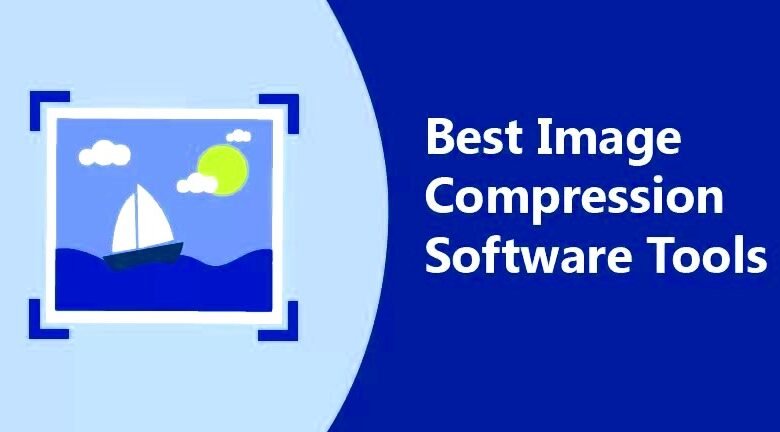9 Best Image Compressor for Great SEO Results

In the ever-evolving landscape of SEO, one crucial aspect that website owners often overlook is image compression. The way images are handled on a website can significantly impact its loading speed, user experience, and, ultimately, its search engine ranking.
EXPLORE THE CONTENTS
Why Image Compression Matters
When users visit a website, they expect swift loading times. Large, uncompressed images can slow down the loading speed, leading to frustrated users and potential bounce-offs. Image compression ensures that the website remains snappy and responsive, contributing to a positive user experience. Moreover, search engines consider page loading speed as a ranking factor, making image compression an indirect but vital element of SEO strategy.
Criteria for Choosing Image Compressor Tools
Selecting the right image compressor tool is crucial for achieving the right balance between file size reduction and image quality retention. Look for tools that offer a high compression ratio, support various file formats, and are easy to use.
Top Image Compressor Tools
Image compression is a critical component of optimizing a website for better performance and improved SEO. Choosing the right image compressor tool is essential to striking a balance between reducing file sizes and maintaining image quality. Here, we delve into the details of the top image compressor tools, exploring their features and advantages.
-
TinyPNG
- Features:
- It is renowned for its exceptional compression ratio without compromising image quality.
- It supports both PNG and JPEG formats, making it a versatile choice for various image types.
- User-friendly interface, making it accessible to both beginners and experienced users.
- Advantages:
- High-quality compression ensures a minimal loss of visual fidelity.
- Straightforward integration into websites requires minimal effort from users.
- Features:
-
ImageOptim
- Features:
- It is popular among Mac users for its simplicity and effectiveness in compressing images.
- Supports various file formats, providing flexibility for different image types.
- Allows users to adjust compression settings, offering a personalized compression experience.
- Advantages:
- Moderate to high compression ratio with reliable preservation of image quality.
- Ideal for users who prefer a customizable compression process.
- Features:
-
Kraken.io
- Features:
- Offers a robust API for developers, enabling seamless integration into web applications.
- User-friendly web interface for non-developers, making it accessible to a broad audience.
- It boasts a high compression rate and supports popular image formats.
- Advantages:
- A versatile tool is suitable for both developers and website owners.
- Effective compression without significant compromises on image quality.
- Features:
-
ShortPixel
- Features:
- Excels in both lossless and lossy compression, catering to different user preferences.
- Provides a WordPress plugin, simplifying the integration process for WordPress users.
- Supports various file formats, ensuring compatibility with different image types.
- Advantages:
- Comprehensive solution for WordPress users, streamlining the image optimization process.
- High compression efficiency for both lossy and lossless compression.
- Features:
-
Compressor.io
- Features:
- Stands out for its simplicity and effectiveness in reducing image file sizes.
- Supports various file formats, providing flexibility for users with diverse image types.
- Offers a visual comparison of the original and compressed images for user assessment.
- Advantages:
- User-friendly interface, suitable for those looking for a straightforward compression tool.
- Visual comparison aids in assessing the impact of compression on image quality.
- Features:
-
JPEGoptim
- Features:
- Focused on JPEG compression, providing specialized optimization for this popular format.
- Command-line tool, ideal for users comfortable with command-line interfaces.
- Quick and efficient optimization for JPEG images.
- Advantages:
- Specifically designed for JPEG compression, it ensures optimal results for this format.
- Fast and efficient compression process through a command-line interface.
- Features:
-
Optimizilla
- Features:
- A web-based tool allowing users to upload multiple images for simultaneous compression.
- Provides a real-time preview of compressed images, facilitating instant adjustments.
- Supports JPEG and PNG formats, covering common image types.
- Advantages:
- Simultaneous compression of multiple images saves time for users dealing with bulk optimization.
- A real-time preview assists users in finding the right balance between compression and quality.
- Features:
-
EWWW Image Optimizer
- Features:
- WordPress plugin that automatically optimizes images upon upload to the website.
- Supports various file formats, offering flexibility for different image types.
- Provides both lossy and lossless compression options.
- Advantages:
- Seamless integration into WordPress websites, automating the image optimization process.
- Versatility in compression options, catering to different user preferences.
- Features:
-
Squoosh
- Features:
- It provides a straightforward online interface for image compression and is Google-developed.
- Supports multiple image formats, ensuring compatibility with diverse image types.
- Allows users to preview and adjust compression settings in real-time.
- Advantages:
- Developed by a reputable entity (Google), it ensures reliability and effectiveness.
- A real-time preview enables users to fine-tune compression settings for optimal results.
- Features:
How to Use Image Compressor Tools Effectively
Let’s take a closer look at how to use TinyPNG, one of the most popular image compressor tools, effectively.
- Visit the TinyPNG website.
- Upload your image files.
- The tool will automatically compress the images.
- Download the compressed images and replace the original files on your website.
Benefits of Using Image Compression for SEO
The advantages of image compression extend beyond faster loading times. Websites that optimize their images experience reduced bounce rates, as users are more likely to stay and explore when pages load quickly. Additionally, search engines like Google prioritize faster websites in their rankings, giving compressed sites a competitive edge.
Common Misconceptions About Image Compression
-
Myth 1: Loss of Image Quality
- Quality loss is minimal, and the benefits far outweigh any minor changes that may occur.
-
Myth 2: Limited File Format Support
- Many tools support a wide range of formats, ensuring compatibility with different website requirements.
-
Myth 3: Complicated Compression Processes
- Most image compressor tools are user-friendly, requiring only a few clicks to achieve optimal results.
Case Studies
Highlight success stories where websites have significantly improved their loading speed and SEO rankings through effective image compression.
Tips for Optimizing Images for SEO Beyond Compression
In addition to compression, consider optimizing images by giving them descriptive names, including relevant alt text, and ensuring they fit well within a responsive design.
Future Trends in Image Compression Technology
Keep an eye on emerging trends, such as AI-driven compression advancements and new file formats, that may further revolutionize image optimization.
User Reviews and Recommendations
Gather insights from users who have utilized these tools. Real-world experiences provide valuable information for those considering image compression for their websites.
Comparison Table of Image Compressor Tools
| Tool | Compression Ratio | Supported Formats | User-Friendliness |
|---|---|---|---|
| TinyPNG | High | PNG, JPEG | Very User-Friendly |
| ImageOptim | Moderate to High | Various | User-Friendly |
| Kraken.io | High | Popular formats | User-Friendly |
| ShortPixel | High | Various | User-Friendly |
| Compressor.io | High | Various | User-Friendly |
| JPEGoptim | High | JPEG | Moderate |
| Optimizilla | High | JPEG, PNG | User-Friendly |
| EWWW Optimizer | High | Various | Moderate |
| Squoosh | High | Various | User-Friendly |
Challenges in Image Compression and How to Overcome Them
Addressing compatibility issues and storage constraints while emphasizing the importance of continuous optimization.
Conclusion
In conclusion, implementing image compression tools is a strategic move for enhancing both website performance and SEO. The discussed tools provide a range of options catering to different needs, ensuring that even non-tech-savvy website owners can boost their online presence.
FAQs
- How does image compression impact SEO?
- Image compression improves loading speed, positively influencing SEO rankings.
- Do these tools support all image formats?
- Most tools support popular formats like JPEG and PNG, ensuring compatibility.
- Is there a risk of significant quality loss with image compression?
- No, modern tools minimize quality loss while optimizing file sizes.
- Can image compression be applied to existing websites?
- Yes, most tools allow users to compress existing images without compromising quality.
- Are there free image compressor tools available?
- Yes, many of the tools mentioned offer free versions with limited features.







